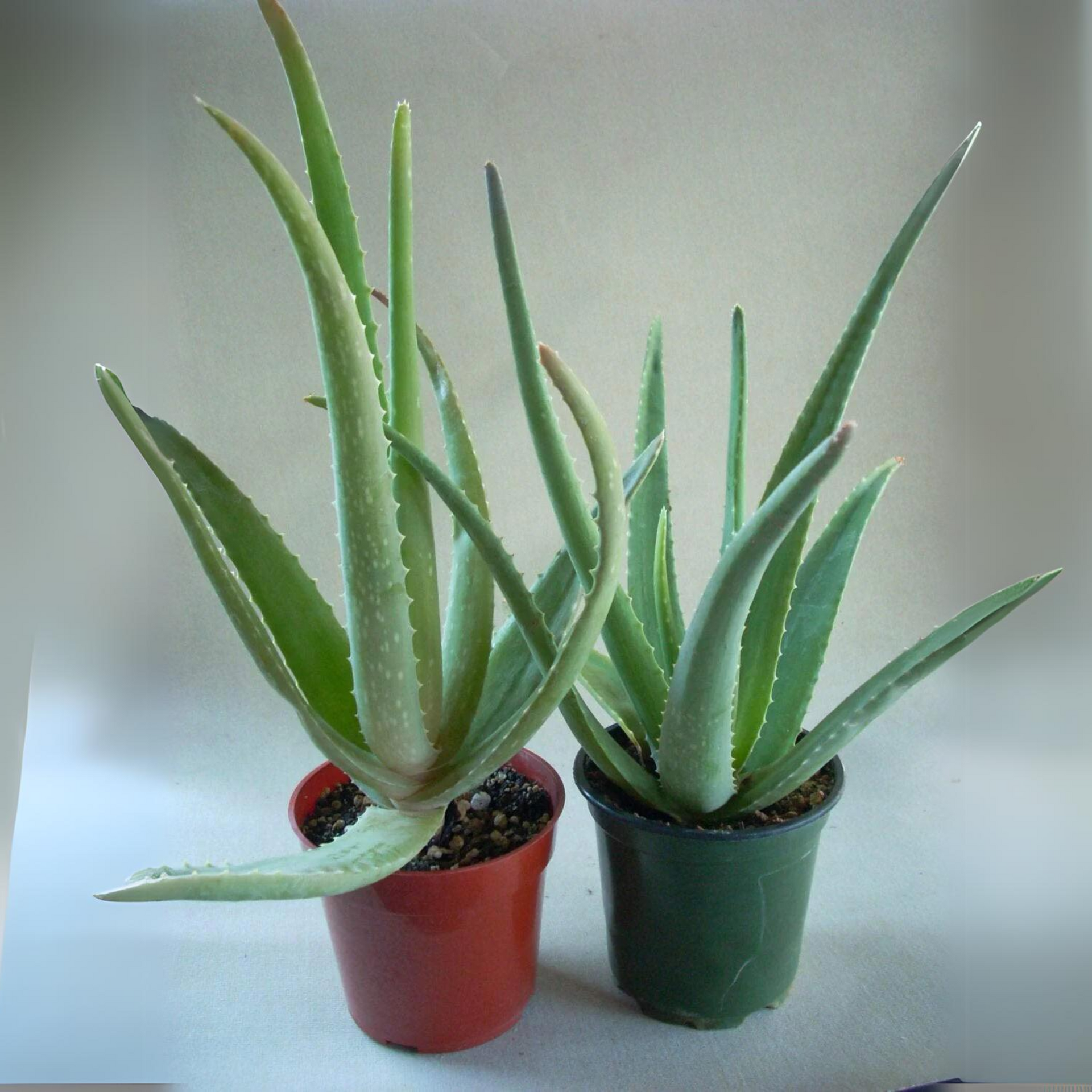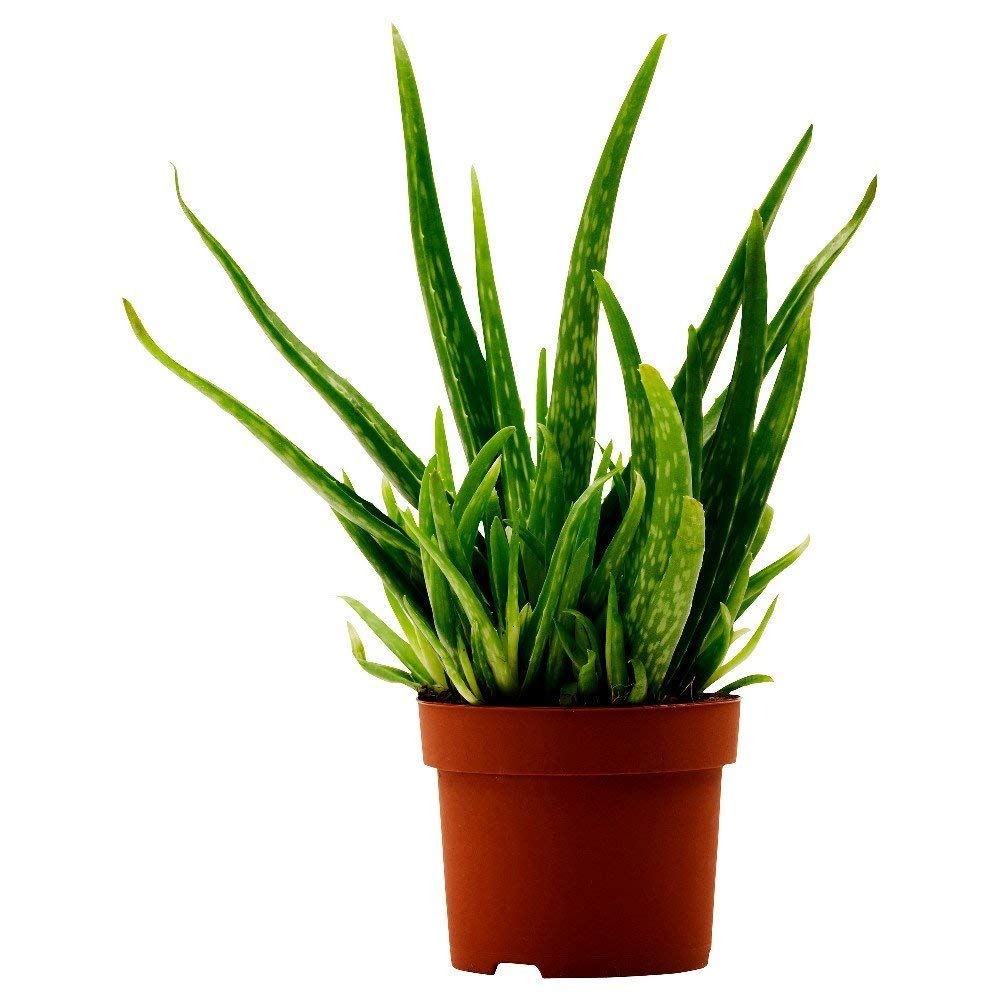

Green Paradise Offers Healthy Aloe Vera Plant
About Aloe Vera Plant
Aloe vera (Aloe barbadensis miller) is a succulent plant that belongs to the Aloe genus, which is native to the Arabian Peninsula but is now widely cultivated around the world for its numerous medicinal, cosmetic, and ornamental uses. The plant has been used for thousands of years for its therapeutic properties and is considered a significant natural remedy in many cultures.
Physical Characteristics:
Aloe vera typically has thick, fleshy, lance-shaped leaves that grow in a rosette pattern. The leaves are green and can vary in size, reaching up to 2 to 3 feet (about 60 to 90 cm) in length. The leaf margins are serrated with small, soft spines. When the leaves are cut or broken, a clear, gel-like substance oozes out, which is the part used for various medicinal applications.
Medicinal Uses:
The gel extracted from the Aloe vera leaves contains a plethora of bioactive compounds, such as vitamins (A, C, E, B12), minerals (calcium, magnesium, zinc), enzymes, amino acids, and polysaccharides. These components contribute to its various health benefits, including:
Skin Care:
Aloe vera gel is renowned for its soothing and moisturizing properties, making it a popular natural remedy for skin conditions like sunburn, minor burns, rashes, and dry skin. It can also be used to alleviate the discomfort caused by insect bites and stings.
Wound Healing:
The gel's anti-inflammatory and antimicrobial properties aid in promoting wound healing and reducing the risk of infection.
Digestive Health:
Aloe vera juice, made from the inner leaf gel, has been used to support digestive health and alleviate issues like constipation. However, it is essential to use it with caution, as excessive consumption may lead to adverse effects.
Immune System Support:
Some studies suggest that Aloe vera may help boost the immune system due to its bioactive compounds.
Cosmetic and Culinary Uses:
Apart from its medicinal applications, Aloe vera is also utilized in cosmetic products, such as creams, lotions, shampoos, and soaps, for its moisturizing and nourishing properties. Additionally, some people incorporate Aloe vera gel into their diet as a dietary supplement or as an ingredient in smoothies and juices, attributing it to potential health benefits.
Cultivation:
Aloe vera is a hardy plant that thrives in warm climates. It prefers well-draining soil and plenty of sunlight. In colder regions, it can be grown indoors as a potted plant. Propagation is usually done through offshoots or "pups" that emerge from the base of mature plants.
Caution:
While Aloe vera is generally safe when used externally for most people, some individuals might be sensitive to its components and experience skin irritation. Additionally, when consumed as a juice or supplement, it can cause gastrointestinal discomfort and interact with certain medications. It's always best to consult a healthcare professional before using Aloe vera for medicinal purposes, especially if you have any underlying health conditions or take medications.
In conclusion, Aloe vera is a versatile and valuable plant with a long history of use for its medicinal and cosmetic properties. Its popularity as a natural remedy continues to grow, making it a staple in many households around the world.
How To Grow Aloe Vera Plant
Growing an Aloe Vera plant is relatively easy and rewarding. Aloe Vera is a popular succulent plant known for its gel-filled leaves, which have various medicinal and skincare properties.
Here's a step-by-step guide on how to grow and care for an Aloe Vera plant:
Obtain a healthy Aloe Vera plant:
You can buy an Aloe Vera plant from a nursery or garden center. Make sure to choose a plant with firm, green leaves and no signs of damage or pests.
Select the right pot:
Aloe Vera prefers well-draining soil, so choose a pot with drainage holes to prevent waterlogging. A pot made of terracotta or any other porous material is ideal.
Prepare the soil:
Aloe Vera thrives in a sandy or cactus potting mix. You can also create your own mix by combining regular potting soil with sand or perlite to improve drainage.
Planting the Aloe Vera:
Fill the pot with the prepared soil mix and gently place the Aloe Vera plant in the center. Ensure the plant sits at the same level it was in its previous container. Fill the sides with more soil and pat it down gently.
Sunlight and Location:
Aloe Vera requires plenty of bright, indirect sunlight. Place the plant near a sunny window or in an area with filtered sunlight. Avoid placing it in direct sunlight for extended periods as it can lead to sunburn.
Watering:
Aloe Vera is a drought-tolerant plant and can survive with minimal water. Water the plant only when the top 1-2 inches (2.5-5 cm) of soil is dry. Overwatering can cause root rot, so avoid letting the plant linger in wet soil.
Temperature and Humidity:
Aloe Vera prefers temperatures between 60°F to 75°F (15°C to 24°C). It can tolerate higher temperatures but may suffer in extreme cold. Keep the humidity levels moderate, as high humidity can encourage fungal issues.
Fertilizing:
Aloe Vera doesn't require frequent fertilization. You can apply a balanced, diluted liquid fertilizer once every 4-6 weeks during the growing season (spring and summer). Avoid fertilizing during the winter months.
Pruning and Maintenance:
Remove any dead or damaged leaves from the plant using clean, sharp scissors or pruning shears. This contributes to the plant's overall health and aesthetics.
Propagation:
Aloe Vera can be propagated easily by removing offsets or "pups" that grow around the base of the plant. Allow the pups to dry for a day before planting them in a separate pot with well-draining soil.
Pests and Diseases:
Aloe Vera is relatively resistant to pests and diseases. However, overwatering can lead to fungal issues or rot. Keep an eye out for mealybugs, aphids, or scale insects, and treat them promptly if spotted.
With proper care, your Aloe Vera plant should grow and thrive, providing you with its unique and useful benefits. Enjoy your beautiful and beneficial Aloe Vera plant!
Planting And Caring
Aloe vera is a popular and easy-to-care-for plant that offers numerous health and beauty benefits.
Here's a step-by-step guide on planting and caring for an aloe vera plant:
Planting:
Select a Suitable Pot:
Choose a pot that has good drainage holes to prevent waterlogging. Aloe vera prefers a slightly tight fit, so don't pick a pot that is too large.
Potting Mix:
Use a well-draining potting mix suitable for succulents or cacti. Alternatively, you can create your own mix by combining regular potting soil with sand or perlite to improve drainage.
Planting Process:
- Fill the pot with the potting mix, leaving enough space at the top for the plant.
- Gently remove the aloe vera factory from its nursery pot, being careful not to damage the roots.
- Place the plant in the center of the pot and fill the sides with additional potting mix, gently patting it down to secure the plant.
Sunlight:
Aloe vera thrives in bright, indirect sunlight. It can also tolerate some direct sunlight, but avoid exposing it to scorching afternoon sun as this may damage the leaves.
Caring:
Watering:
Aloe vera is a succulent and is adapted to arid environments, so it doesn't require frequent watering. Allow the top 1-2 inches of the soil to dry out between watering sessions. Overwatering can lead to root spoilage, so it's pivotal not to let the factory sit in soppy soil.
Temperature:
Aloe vera prefers temperatures between 59°F to 77°F (15°C to 25°C). It can survive in slightly cooler or warmer temperatures, but protect it from frost or extreme heat.
Humidity:
Aloe vera is relatively low-maintenance when it comes to humidity, as it can tolerate dry air well.
Fertilizing:
Aloe vera doesn't require frequent fertilizing. You can feed it with a balanced, water-soluble fertilizer diluted to half strength during the growing season (spring and summer). Avoid fertilizing during the winter months.
Pruning:
Remove any damaged or dead leaves at the base of the plant using clean and sharp scissors. This will keep the plant looking tidy and help prevent any potential diseases from spreading.
Pests and Diseases:
Aloe vera is relatively resistant to pests and diseases, but overwatering can attract pests like gnats and mites. To avoid this, ensure proper drainage and avoid overwatering.
Repotting:
Aloe vera plants prefer to be slightly root-bound, so you don't need to report them often. However, if the plant has outgrown its current pot or is showing signs of distress, you can report it during the spring. Use a somewhat larger pot and well-draining soil.
Remember that individual plant care can vary, so observe your aloe vera plant and adjust your care routine accordingly. With the right care, your aloe vera should thrive and provide you with its numerous benefits.
Common Problems With Aloe Vera
Aloe vera is a versatile and widely used plant known for its various health and beauty benefits. However, like any natural product, it can also have some potential problems and side effects.
Here are some common problems associated with aloe vera:




